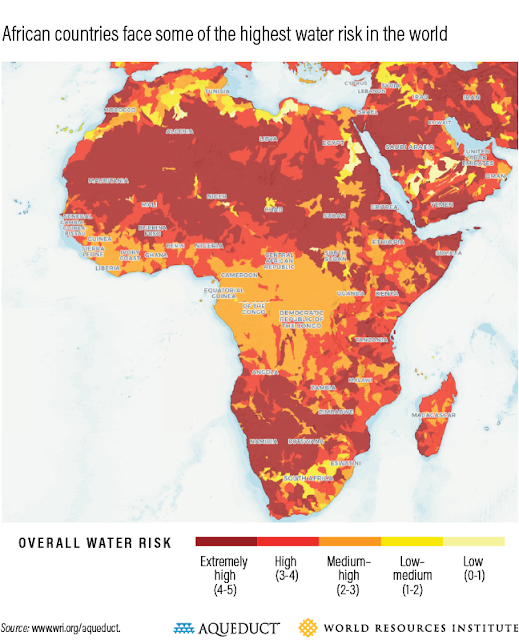Ethiopia’s challenge to Egypt’s Nile hegemony
Welcome back to my blog. In the
last entry we explored how historical international water treaties concerning
the Nile were dominated by colonial powers and, especially Britain’s, desire to
have a monopoly. In this blog we will explore how Ethiopia’s biggest challenge to
the status quo yet.
The lack of inclusion of upstream states in repeated treaties is said to have inspired the Nyerere Doctrine (named after Julius Nyerere, the former president of Tanzania), which in this case of water conflict stipulated that former colonies of Britain were under no obligation to be bound by agreements signed by Britain. Interestingly, while the interests of upriver and downriver nations of the Nile are different, both groups assert that their position is supported by international law. While downstream nations emphasise the UN Convention on the Law of the Non-Navigational Uses of International Watercourses’ principle of “obligation not to cause harm”, upstream countries highlight the “equitable use” principle from the same convention. It should be recognised that in adopting this principle, upstream countries have abandoned a more extreme view of total sovereignty, meaning a nation is entitled to use its resources as it pleases regardless of it may affect other countries.
The lack of inclusion of upstream states in repeated treaties is said to have inspired the Nyerere Doctrine (named after Julius Nyerere, the former president of Tanzania), which in this case of water conflict stipulated that former colonies of Britain were under no obligation to be bound by agreements signed by Britain. Interestingly, while the interests of upriver and downriver nations of the Nile are different, both groups assert that their position is supported by international law. While downstream nations emphasise the UN Convention on the Law of the Non-Navigational Uses of International Watercourses’ principle of “obligation not to cause harm”, upstream countries highlight the “equitable use” principle from the same convention. It should be recognised that in adopting this principle, upstream countries have abandoned a more extreme view of total sovereignty, meaning a nation is entitled to use its resources as it pleases regardless of it may affect other countries.
In April 2011, The Ethiopian government unveiled plans to build the Grand Renaissance Ethiopian Dam, GERD in the northwest region of the country. The dam has a capacity to hold 63 million m3 of water, which is ~1.3 times the yearly flow volume of the Blue Nile, and a possible hydroelectricity generating potential of over 5 gigawatts. Its construction was seen as vital to meet the future energy demands of the country’s fast-growing economy. Its electricity final consumption has increased by more than 870% since 1990 to 10.48 TWh per year and that’s still with more than half of the population not having access to electricity. While Ethiopia is also increasing its solar, wind and geothermal generating capacities to make its energy system more climate-resilient, the GERD with its hefty price tag of $4.8 billion is by far the biggest infrastructure project the country has undertaken. The fact that only 3% of the country’s hydropower potential was tapped and the majority of its population was reliant on burning biomass before the dam makes it obvious as to why the GERD was necessary.
Although the dam has been characterised as a “shared resource” and its
benefits “transboundary”, Ethiopia has often preferred to portray its development
as a solely national endeavour. The then Prime
Minister, Meles Zenawi, in his speech on the day construction commenced emphasised
the country’s long-term dream of becoming an exporter of electricity (4 GW over
the coming decade). The word renaissance and the image of rebirth and a return
to past glory that it is meant to invoke plays into the country’s rebranding of
itself from a poor, aid reliant nation to a regional powerhouse capable of
undertaking megaprojects.
 |
A picture of the GERD (Sharaf, 2022)
|

Comments
Post a Comment